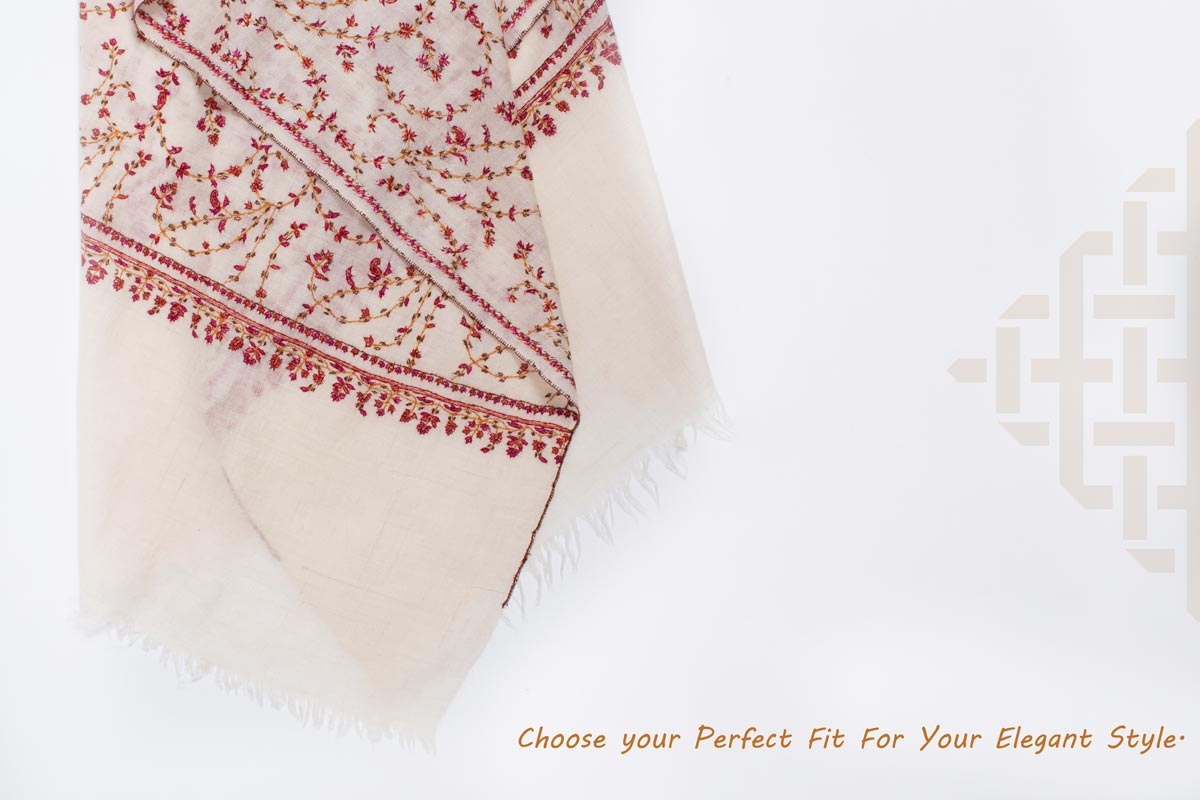
Shahtoosh: Die opulente Eleganz des teuersten Stoffes der Welt
Wenn es um Luxusstoffe geht, steht einer in puncto Exklusivität und Anziehungskraft über allen anderen: Shahtoosh. Der aus dem Unterfell der seltenen Chiru-Antilope auf dem tibetischen Plateau gewonnene Shahtoosh-Stoff hat die Welt mit seiner unvergleichlichen Weichheit, Zartheit und Wärme fasziniert. Mit einem Preisschild, das seine Seltenheit und seine außergewöhnlichen Qualitäten widerspiegelt, bleibt Shahtoosh der Inbegriff von Opulenz im Bereich der Textilien. In diesem Artikel werden wir uns mit den Ursprüngen, Eigenschaften, Kontroversen und der Attraktivität von Shahtoosh befassen.
Die Ursprünge von Shahtoosh:
Shahtoosh, was auf Persisch „König der Wolle“ bedeutet, hat eine reiche Geschichte, die eng mit den Traditionen und der Kultur der Region verwoben ist. Erfahrene Kunsthandwerker aus dem Kaschmirtal in Indien und benachbarten Regionen weben Shahtoosh-Schals sorgfältig von Hand und verleihen jedem Stück eine einzigartige Mischung aus Kunstfertigkeit und Handwerkskunst.
Unübertroffene Weichheit und Zartheit:
Was Shahtoosh auszeichnet, ist seine außergewöhnliche Weichheit, die auf die unglaublich geringe Mikronzahl des Unterfells des Chirus zurückzuführen ist. Mit einer Mikronzahl zwischen 9 und 11 gehört Shahtoosh zu den feinsten Naturfasern, die je entdeckt wurden. Die aus diesem Stoff hergestellten Schals sind so leicht, dass sie mühelos durch einen Ehering passen, ein Beweis für ihre exquisite Feinheit. Über die Schultern gelegt bieten Shahtoosh-Schals unvergleichliche Wärme und Komfort, was sie bei Luxuskennern sehr begehrt macht.
Kontroversen und Bedenken hinsichtlich des Naturschutzes:
Shahtoosh wird zwar seit langem mit Luxus und Prestige in Verbindung gebracht, ist aber auch umstritten. Die Chiru-Antilope, die einst auf dem tibetischen Plateau weit verbreitet war, hat aufgrund unregulierter Jagd und Wilderei wegen ihres wertvollen Unterfells einen erheblichen Bestandsrückgang erlebt. Der illegale Handel mit Shahtoosh-Produkten stellt eine ernsthafte Bedrohung für das Überleben der Chiru dar und hat zu weltweiten Bemühungen geführt, die Art zu schützen und die Produktion und den Handel von Shahtoosh zu verbieten.
Gesetzgebung und Verbot:
Regierungen und internationale Organisationen haben erkannt, wie dringend es ist, die Chiru-Antilope zu schützen. Sie haben strenge Vorschriften erlassen und Shahtoosh verboten. Diese Maßnahmen zielen darauf ab, die gefährdete Art zu schützen und die illegale Jagd und den Handel mit ihrem Unterfell zu verhindern. Der Besitz oder Verkauf von Shahtoosh-Produkten gilt in vielen Ländern als Straftat, was das Engagement zum Schutz der Chiru und zur Förderung ethischer Praktiken in der Modebranche unterstreicht.
Suche nach ethischen Alternativen:
Das Verbot von Shahtoosh hat Modedesigner und Hersteller dazu veranlasst, nach ethischen Alternativen zu suchen, die die luxuriösen Eigenschaften des Shahtoosh nachahmen. Künstlerisch Pashmina gilt als beliebter Ersatz und bietet ein Maß an Weichheit und Wärme, das mit anderen luxuriösen Stoffen vergleichbar ist, und das alles bei gleichzeitiger Einhaltung nachhaltiger und verantwortungsvoller Beschaffungspraktiken. Diese Alternativen ermöglichen es den Verbrauchern, in den Genuss luxuriöser Stoffe zu kommen, ohne zum Schaden beizutragen, der durch den illegalen Handel mit Shahtoosh entsteht.
Ein Erbe bewahren:
Wenn wir über die Zukunft von Shahtoosh nachdenken, ist es wichtig, die Bedeutung des Schutzes nicht nur der Chiru-Antilope, sondern auch des mit diesem Stoff verbundenen kulturellen Erbes zu erkennen. Es werden Anstrengungen unternommen, um das Bewusstsein zu schärfen, Naturschutzinitiativen zu fördern und den lokalen Gemeinschaften nachhaltige Lebensgrundlagen zu bieten. Indem wir ethische Modeentscheidungen unterstützen und Alternativen wie Shahkaar annehmen Pashmina aus natürlichem Elfenbein, wir verbessern nicht nur unseren Stil, sondern spielen auch eine wichtige Rolle beim Schutz der Tierwelt und der Bewahrung traditioneller Handwerkskunst.
Shahtoosh-Stoffe verkörpern mit ihrer unvergleichlichen Weichheit, Zartheit und Wärme Luxus. Seine Begehrlichkeit geht jedoch mit Kontroversen um die gefährdete Chiru-Antilope und den illegalen Handel mit ihrem Unterfell einher. Lassen Sie uns bei der Bewältigung der Komplexitäten rund um Shahtoosh den Artenschutz priorisieren, ethische Alternativen unterstützen und das reiche kulturelle Erbe feiern, das mit diesen bemerkenswerten Stoffen verbunden ist. Auf diese Weise können wir Luxus neu definieren, um ihn mit Nachhaltigkeit in Einklang zu bringen und zu einer verantwortungsvolleren und mitfühlenderen Modebranche beizutragen.





Hinterlassen Sie einen Kommentar
Diese Website ist durch hCaptcha geschützt und es gelten die allgemeinen Geschäftsbedingungen und Datenschutzbestimmungen von hCaptcha.